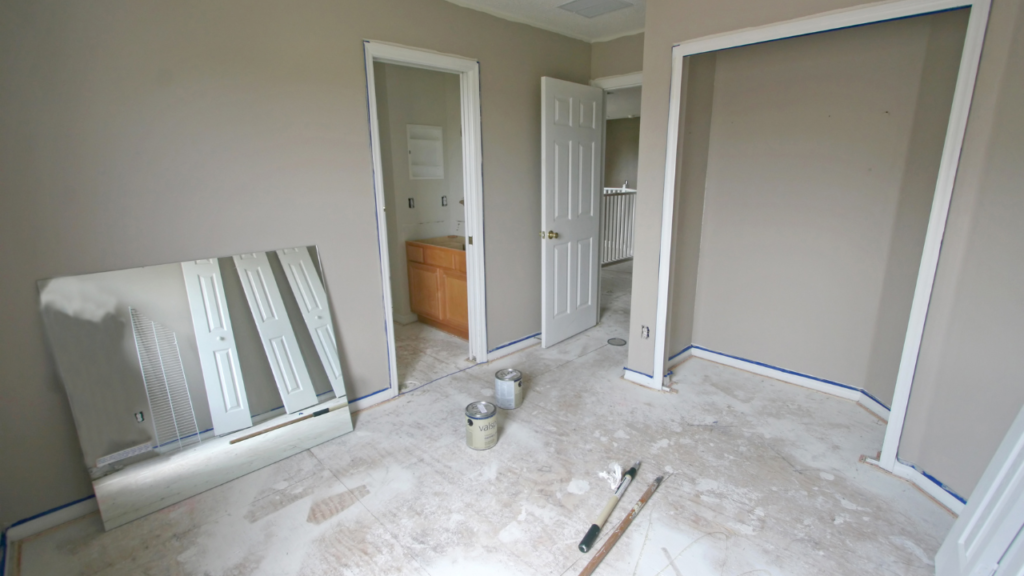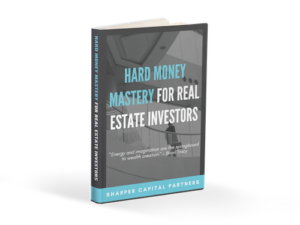Ever asked a hard money or private lender for a quote only to come away confused trying to figure out what hard money loan fees you were getting charged for?
From points and interest to doc prep and disbursement fees, it’s easy to get confused about how much a loan is going to cost you.
In this post, we are breaking down the most common fees and why lenders charge them.
The five most common fees are:
- Loan Origination Fees (Points)
- Interest
- Appraisal (BPO) Fees
- Document Preparation Fees
- Construction Draw Fees
Let’s take a deep look into the purpose of each.
Loan Origination Fees (Points)
Loan origination fees or points are fees paid to the loan originator or broker typically at closing for putting the loan together.
This fee is usually expressed as a percentage of the total loan amount.
For example, let’s pretend that you were given a loan for $100,000.00 and the loan originator (aka the Lender) states that they charge a 2 percent loan origination fee.
This means you will be charged a loan origination fee of 2% x $100,000 = $2,000.
It’s worth noting that some lenders may get more creative and charge the loan origination fee at the sale or refinance of the property also known as the exit of the property or loan.
In addition, most lenders have a minimum fee they will charge.
So, if the loan amount drops below a certain number, you may be charged an origination fee greater than 2%.
Why Do Lenders Charge Origination Fees?
Truthfully, this is where most hard money lenders make their money especially when they aren’t the capital behind the loan.
Some hard money lenders, ourselves included, raise capital from other private investors to fund loans.
We will use their money to fund the loan and in return, we will offer them a rate of return of 10%.
They don’t get a cut of the origination fee, so all of those proceeds go to loan originators like us.
Now that you understand how origination fees work, let’s briefly talk about interest.
Interest Payments
Interest is the price that the lender charges you the client to loan you money and it’s usually expressed as an Annual Percentage Rate. This is commonly referred to by its acronym (APR).
Interest payments are typically paid monthly and we’ll get into why that is in just a moment.
And while interest is a well-known expense, calculating payments on hard money loans can leave clients confused.
That’s why we dedicated two podcast episodes and two articles to doing exactly that.
You can check them out below👇
- How to Calculate Interest on Your Hard Money Loan – Part I (Podcast)
- How to Calculate Interest on Your Hard Money Loan – Part I (Blog Post)
- How to Calculate Interest on Your Hard Money Loan – Part II (Podcast)
- How to Calculate Interest on Your Hard Money Loan – Part II (Blog Post)
At a high level, to find your monthly interest payment take the interest rate (e.g. 12%) and multiply it by the total loan amount (e.g. $100,000) and divide it by 12 for the twelve months in a year.
From our previous example, it would look like this:
Loan Amount: $100,000
Annual Interest Rate: 12%
Months in a Year: 12
Monthly Interest Payment = $100,000 x 12% / 12 = $1,000 per month
And there you have it, that’s what interest is and how it’s calculated at a high level.
But let’s talk quickly about why it’s charged and why it’s paid monthly.
Why Do Lenders Charge Interest?
So why do lenders charge interest?
Well, it’s pretty simple… no one would be “interested” in lending others their money if there was not some sort of exchange of value taking place.
Interest payments are the reason hard money lenders can raise the money to fund your projects.
First, they find great clients who need deals funded.
Once they have deals needing funding, they will raise capital from various sources like investment funds, lines of credit or other private investors.
And then, they will slightly markup the rates that they are borrowing from one of those capital sources and provide that interest rate to the real estate investor.
For example, we raise capital from private investors and offer them a 10% APR return. In turn, we loan that money out to real estate investors at 12%.
We do all the leg work of sourcing, underwriting, and originating the loan, and private investors make a solid return.
In addition, real estate investors have a consistent pool of capital to work with and a professional team they can count on with clear terms that they can scale their business around.
Win. Win. Win.
But Why Monthly Payments?
This really comes down to two reasons: (1) cash flow and (2) capital raising.
Cash Flow
In regard to cash flow, some hard money lenders may have institutional capital backing such as a line of credit.
This means that they have a monthly interest payment that they must service, so they are going to need cash coming in to make up for the cash going out.
Capital Raising
As a standard, private investors, who are the capital source of many hard money lenders, expect a monthly payment.
To private investors, it’s seen as a much lower risk and much more desirable investment than loans that do not pay monthly interest.
So, from a hard money lenders perspective, they are going to charge a monthly payment because it will make it easier on them to attract capital.
Now let’s talk about some of the other fees.
Appraisal (BPO) Fees
Appraisal fees are fees associated with the physical underwriting and evaluation of a property.
As a hard money lender, this typically involves having a real estate professional (e.g. real estate agent, commercial broker, general contractor, etc.), who is familiar with that type of asset, visit that property to it to review the overall scope and after repair value of the property.
A professional appraisal by a licensed appraiser typically runs between $250 – $600 in our market, but a broker price opinion (BPO) which is what we normally ask for is $400.
We don’t markup this fee. We pass this along to the real estate investor at cost because that’s not how we make our money.
So, if we don’t make any money off it, why get a BPO at all?
Here’s why…
Why Hard Money Lenders Get Appraisals (BPOs)
At Sharper Capital Partners, we invest our own capital as well as the capital of other private investors.
Because of this, we have a responsibility to source a second opinion in underwriting these projects because, let’s face it, we are incentivized to write loans.
We don’t make money unless we write loans, so how do we make investors feel comfortable with our underwriting?
You guessed it, we get an appraisal (BPO).
This goes in the project file that we show to capital investors when we go to pitch a project to them.
It’s just another form a reassurance to the private investors and another failsafe in the underwriting process.
Document Preparation Fees
As you know, hard money lenders base their loans on the hard assets they lend against.
This means that securing the promissory note to the property (via a mortgage) is the most important step in the lending process to protect their capital.
And getting loan documents ready for closing is no small task.
Some hard money lenders will prep their own documents for closing while others will outsource the task to a licensed attorney who specializes in originating these types of loans.
Depending on which route your lender chooses to go will determine how much they charge.
I have seen doc prep fees from $150 – $1500.
So let’s address why this fee is charged and how it can get to be so expensive.
Why Do Hard Money Lenders Charge Document Preparation Fees?
Regardless of who is preparing the file for closing and drafting the loan documents, it takes significant time to prepare.
Whatever dollar amount is charged is meant to pay for the time it took to get the documents prepared.
Most of the time, Hard Money Lenders are also passing this fee along to their clients at cost. Especially when they are using a professional legal team.
At Sharper Capital, we made the decision early on to work with a transactional attorney team who specializes in exactly what we do.
We decided to do this because:
- It allowed us to close faster (5 – 7 Business Days)
- Professionally secured our capital to the property
- Allowed us to focus more on servicing our clients
The attorney team we use charges $850 per loan and they take their fee out at closing and that’s exactly what we charge to our clients.
They appreciate the professional and fast service so they can get more deals done and we value the security.
Now, let’s talk about Construction Draw Fees.
Construction Draw Fees

If you are requesting a fix and flip loan, chances are your lender will provide some funds to go towards the purchase price and some funds will be held in reserve for rehab.
The real estate investor will complete a portion of the work and in return, the lender will disburse the corresponding amount for the work completed.
Usually, they will disburse the sum of the invoices and receipts provided.
Prior to doing so, the lender will go out to the property or send a trusted third party to inspect the property prior to disbursement to make sure that work has been completed.
And that’s exactly what real estate investors are paying for.
Why Do Lenders Charge Construction Draw Fees?
There are a few costs lenders incur each time a construction draw is requested.
They are:
- Labor Costs
- ACH Fees
- Inspector Fees
Let’s touch on each of them.
Labor Costs
Every hard money lender will have a portfolio manager on staff.
The portfolio manager is responsible for things like (1) getting new borrowers onboarded, (2) managing construction draws, and (3) loan disposition.
Part of the construction draw fee will go towards supporting the compensation of this person.
ACH Fees
Rapidly disbursing funds is of high importance to real estate investors.
Many lenders – ourselves included – make our disbursements via Same-Day ACH.
Some of the fees charged here will go to paying for the ACH Fees charged by their ACH processor.
Inspector Fees
The bulk of the fees will pay for the inspector to go out and view the property.
Inspectors will generally charge $50 – $150 for a property visit.
Some lenders may not send an inspector, which could reduce your overall fees but require more work from the real estate investor to provide photos or videos of the completed work.
Conclusion
Hard Money Lenders may charge additional fees depending on the type of asset they are lending on or if there are other specificities to the deal (e.g. commercial assets require environmental studies).
In general, the fees listed above are the most common for a residential property that is 1 to 4 units.
To recap, the five most common fees are:
- Loan Origination Fees (Points)
- Interest
- Appraisal (BPO) Fees
- Document Preparation Fees
- Construction Draw Fees
At Sharper Capital Partners, one goal is 100% transparency.
If you have any other questions about fees you are being charged by us or your current lender, feel free to ask a question in the comment section below.

